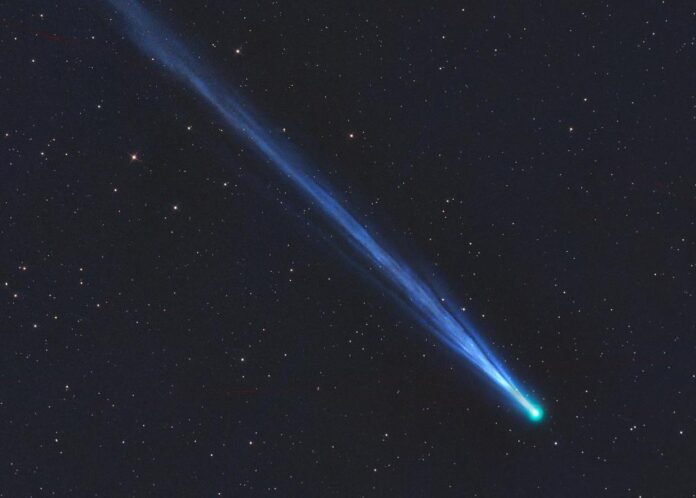You have a short window of opportunity to see the comet Nishimura in the sky before it retreats to the outer solar system, not to return for 400 years.
Nishimura was first spotted on August 12 of this year, and its peculiar green glow has since caught the attention of scientists all around the world. Its closest approach to the sun was on September 17; in the days leading up to that date, it could be seen in the northern hemisphere in the early mornings, a few hours before sunrise.
Comets, sometimes known as filthy snowballs, are composed of rock and ice, and their signature tails are formed when a significant amount of the comet’s ice transforms into a charged gas called plasma as it approaches the sun.
Concerns were raised about the comet’s survival when it came within 33 million km of the sun’s surface.
Don Pollacco of the University of Warwick in the UK notes that “some do not survive,” meaning that they can simply vanish. Thankfully, Comet Nishimura avoided this outcome.
Pollacco said it has “receded from the sun and is heading back into the cold depths of the solar system,” where it will remain for the next 400 years. Our last chance to view Nishimura has arrived before it vanishes forever.
Nishimura was struck by a powerful solar storm during its close approach. The comet’s plasma tail was disconnected from the comet for a short time due to a burst of charged particles from the sun.
While the exact causes of these phenomena remain a mystery, a laboratory study conducted in 2018 suggested that an electrostatic field produced by the plasma’s interaction with the solar wind may be to blame.
Diatomic carbon, which consists of two carbon atoms bonded together, gives the comet its distinctive green colour and is found in the coma, the atmosphere surrounding the nucleus.
For the next few days, if you live in the northern hemisphere and want to witness this for yourself, you can find it low on the horizon immediately after sunset. As soon as the sun goes down, look to the west horizon, and you’ll see Mars with Nishimura to its right.
Southern hemisphere residents have a bit more time, maybe a week or two, to witness the comet. It, too, will be visible in the west after sunset, although it will be much lower in the sky than Mars.
Pollacco advises using binoculars, despite reports that it may be seen with the naked eye. After this, it will become increasingly difficult to see without a telescope.
